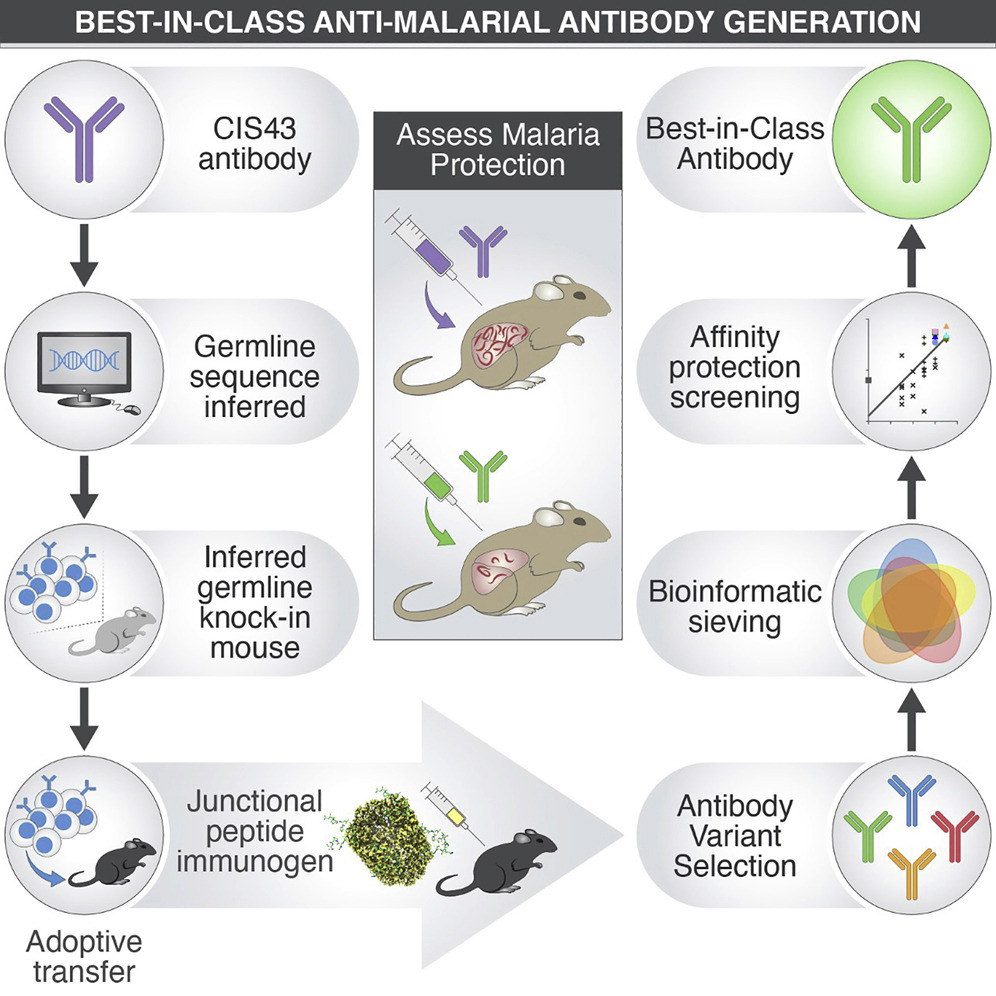Under the COVID-19 pandemic, the crisis of long-standing and equally deadly infectious diseases remains unabated. Although the death rate in 2020 is still being calculated, more than 400,000 people die from malaria each year in sub-Saharan Africa, far exceeding the number of deaths caused by COVID-19. More effective tools are needed to stop the spread of malaria.
Best-in-class anti-malarial antibody generation. (Sven Kratochvil, 2021)
Earlier this year, researchers from the National Institute of Allergy and Infectious Diseases (NIAID) successfully completed a phase 1 clinical trial of the first monoclonal antibody CIS43LS that prevents malaria. A single infusion of CIS43LS can effectively prevent malaria for up to nine months, according to the researchers. CIS43LS can limit infant morbidity and mortality and protect pregnant women, travelers, and soldiers from malaria. In addition, it may even be used as a powerful tool for the eventual elimination of malaria, filling the gap left by vaccine. CIS43LS may become an important choice for wide distribution during the peak spread of seasonal malaria.
Recently, scientists from MIT and other institutions developed a new type of best-in-class anti-malarial antibody, which may help them produce more protective mutants of anti-malarial monoclonal antibodies.
Dr. Facundo D. Batista said they had developed a technique to quickly generate humanized mouse models that have been shown to be effective in preclinical testing of vaccine candidates against a variety of pathogens. But the researchers hypothesized that it might have another application that the antibodies produced by the vaccine can be used to identify more valuable mutants and improve current antibodies. The researchers conducted a series of experiments to gain an in-depth understanding of the vaccine design and the new antibody sequence library. The researchers then created a bioinformatics screening method that could identify promising antibody mutants in the library and test them in malaria animal models.
“We are excited about those new antibodies,” said researcher Kratochvil. At present, researchers have huge data on the characteristics of protective antibodies, which may raise the possibility of combining sequences of highly protective antibodies to produce better antibodies. This method may have worked and eventually produced an antibody called D3, which is more protective and effective than the best monoclonal anti-malarial antibody L9.
For this transformative study, researchers are currently promoting clinical trials of CIS43 and L9 antibodies in humans, who planned to integrate the new method to increase the potential of anti-malaria monoclonal antibodies, and thereby reduce the required dose. Researcher Batista said that antibody improvement is a revolutionary use of the humanized mouse platform, and they have begun to develop better CIS43 mutants. However, malaria is not the only disease for which monoclonal antibodies can be used as a means of prevention and treatment, other diseases including SARS-CoV-2 are being studied.

